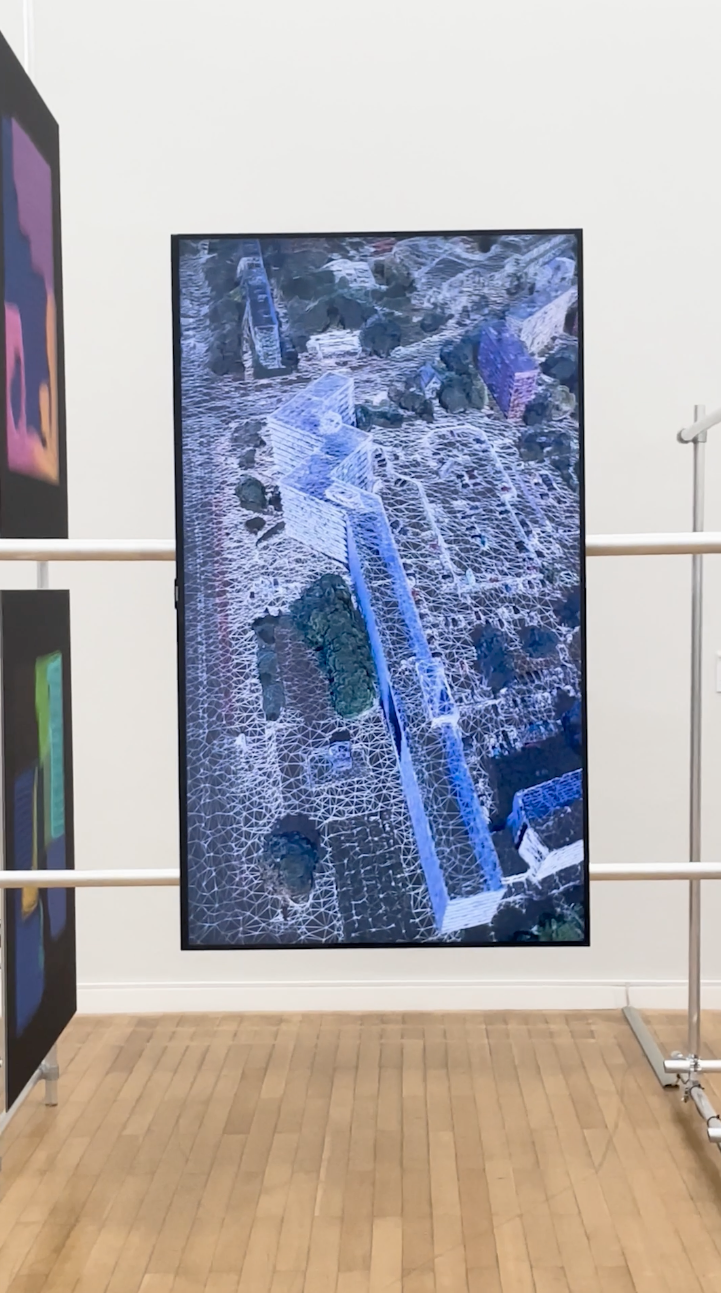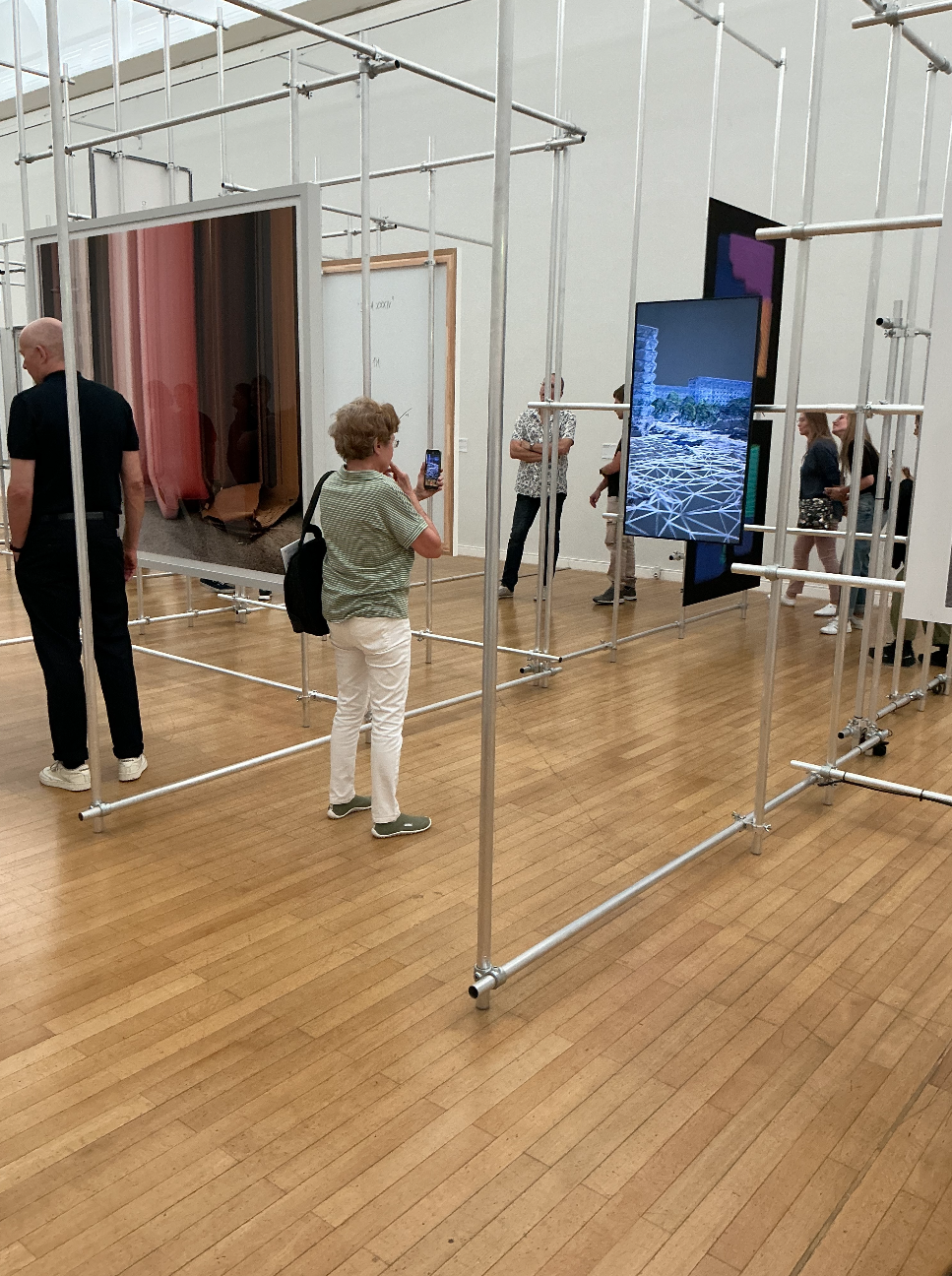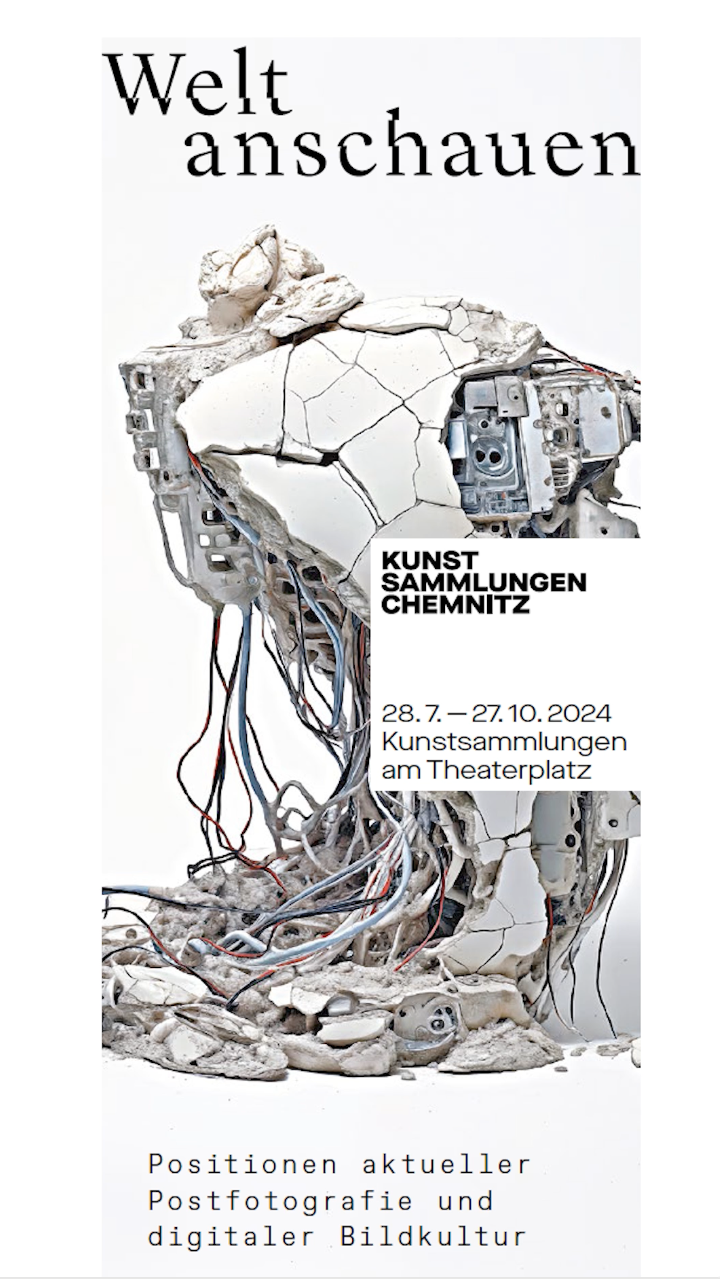3D-GOOGLE-EARTH-MODEL #26, Kunstsammlungen, Chemnitz, 2024
Since 2018, Mohné has been working with three-dimensional models of urban structures based on data from virtual globes such as Google Earth. A specially developed, analogue-digital process in which the artist creates images of the selected location from all sides using virtual "camera drones" in the Google Earth app rather than in real space, and processes them further via photogrammetry, serves as the basis for a site-specific work that "mirrors" the direct surroundings of the gallery space. The virtual model of the neighborhood, realized as a video, augmented reality aswell as the 3D-printed Sculpture appears distorted, the forms simplified, glitches and disturbances create alienation, caused by the algorithms as well as the artistic intervention in the software. The juxtaposition of the real place with its virtual counterpart reveals an ambivalent relationship between the recorded space and its image. In these projects, the artist addresses the new three-dimensional media as a continuation of landscape painting and architectural photography. Just as these have influenced our perception of nature up to now, the new virtual three-dimensional simulations as a new form of documentary images will also shape our relationship to the world.
Viewing the World
Positions of current post-photography and digital image culture.
The Pope in a down coat’, ‘Trump defending himself against arrest’, fake naked pictures of Taylor Swift… Since numerous new image generators and AI programmes flooded the market last year, there has been a proliferation of image fantasies, manipulations, and deepfake videos. These are often almost indistinguishable from ‘real’ images. Their massive dissemination is facilitated in particular by social media.
Over the past thirty years, digital imaging technology has dramatically changed the way images are created. Today, more and more technically generated images are being produced that are based on and derived from photography. However, the term ‘photography’ is no longer sufficient for them. In most cases, today’s view of the world is primarily machine-based. The photographic views transmitted by satellites, drones, and surveillance cameras are often bird’s-eye views. How do artists deal with these new means of production?
Is it still necessary to take photographs at all, or is it enough to use existing images? Jörg Sasse has been asking himself this question since the 1990s, when he began digitising a huge archive of amateur photographs. A moderately creative prompt is often enough to produce a simple AI-generated photograph. With minimalist visual wit and humour, Corinna Schnitt presents a collection of impossible staircases. Joachim Blank feeds an AI with selected photographs from GEO magazine, visually illustrating the power of algorithms over images. Julius Braukmann investigates how fruit photographs itself. Like Alex Grein with his screen stagings, he questions a classic genre of fine art: the still life. Achim Mohné uses virtual drones to create architectural models in virtual space. Katja Stuke explores the possibilities of a digital form of documentary photography by using search engines to research theatres of war in Ukraine.
Strategies of so-called expanded photography are also presented, which often aim at spatialisation and distribution. Juergen Staack, for example, turns photographs back into dust. And Katarína Dubovská recycles published photographs by extracting ink and paper. At the same time, she questions the dematerialisation of digital images in social media.
One centrepiece of the exhibition is an installation created for Chemnitz by the group dark taxa-project. This is an open association of artists who, in temporary constellations, present working methods that question and practice current possibilities of image production. Many of them have a background in photography and teach as professors at art academies and universities of applied sciences. Michael Reisch, the co-initiator of the group, usually starts from a zero point in photography, which is initially open-ended and creates itself using simple image-processing tools. His images often interact with their apparatuses.
Since the Renaissance, when one-point perspective was invented, images have been seen as both as a ‘gateway to the world’ and a means of creating a highly individualised view of the world. How we see the world is always determined by the imaging processes and knowledge of our time. Artists succeed in presenting these in unusual ways, experimenting with them, and often going against the grain.
In this way, the principles of image construction, which have always been the task of art, can be clarified and presented according to their context. Reality is rarely depicted, but it forms a core.
With:
Joachim Blank
Banz & Bowinkel
Julius Brauckmann
Nancy Burson
darktaxa-projekt: the Chemnitz constellation
(Ralf Brueck, Raphael Brunk, Heather Dewey-Hagborg, Philipp Goldbach, Alex Grein, Beate Gütschow, Spiros Hadjidjanos, Fabian Hesse & Mitra Wakil, Kristina Lenz & Alex Simon Klug, Achim Mohné, Johannes Post, Michael Reisch, Anna Ridler, Aaron Scheer, Björn Siebert, David Young)
Katarína Dubovská
Jörg Sasse
Corinna Schnitt
Juergen Staack
Katja Stuke
Details
3D-GOOGLE-EARTH-MODEL #26, Kunstsammlungen, Chemnitz, 2024
3D Pigment Print / Augmented Reality / Video: 3:45 min
20 x 20 x 20 cm
Related
Welt anschauen
Kunstsammlungen am Theaterplatz
28. Jul 2024 – 27. Okt 2024
Curated by Dr. Sabine Maria Schmidt
www.kunstsammlungen-chemnitz.de/ausstellungen/welt-anschauen/





